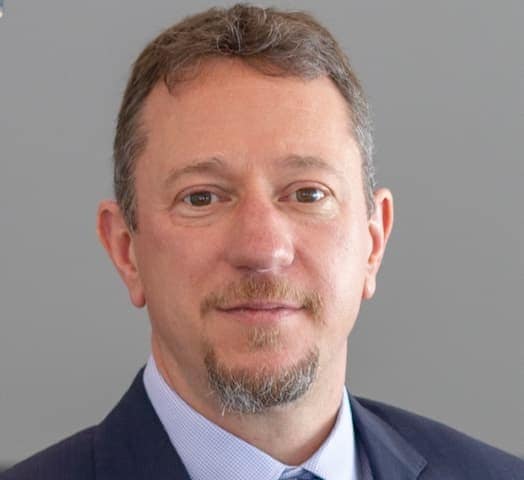Your Scotiabank advisor is your primary contact when it comes to building a financial plan to meet your goals – whether that’s retirement, a new home or funding your child’s education. But do you know who’s responsible for guiding the funds that you and your advisor select for your financial plan?
Portfolio managers perform a range of vital functions behind the scenes, overseeing the daily management of mutual funds, while continually surveying markets and researching companies in order to find the most suitable investments available. When most people think of a portfolio manager, they often envision a “stock-picker,” someone in charge of buying and selling securities. However, a portfolio manager’s duties go beyond security selection and vary depending on the size and scope of the funds they manage. While different portfolio managers often perform different tasks, the primary driver of decision making for Scotiabank portfolio managers is a commitment to delivering positive outcomes for our clients.
Let’s take a deeper dive in order to understand some of the key roles performed by portfolio managers, or PMs, for short.
Portfolio Manager duties: An overview
While perhaps not the most glamourous aspect of being a PM, the reality is that most portfolio managers spend a tremendous amount of time researching companies and the current market environment to gain a fuller understanding of a company’s true value. In addition to scouring financial reports and balance sheets, PMs must also be aware of a wide range of non-financial matters – from how the leadership runs the organization and labour issues to environmental concerns or even a potentially damaging post on social media.
As the primary caretaker of the fund’s assets, portfolio managers must have an in-depth understanding of the fund’s specific investment criteria – from appropriate investments and acceptable risk to return objectives and much more.
Stated simply, strategic asset allocation is the process of dividing a fund’s investments among different asset categories – such as stocks, bonds and cash – in order to better manage risk. During times of market uncertainty, a portfolio manager might reduce a fund’s holdings in certain asset classes that may face imminent challenges, such as rising interest rates.
Once a fund’s asset allocation is set, it requires ongoing maintenance to ensure the target allocation remains in place. This process, known as rebalancing, involves the portfolio manager periodically adjusting a fund’s asset mix in order to bring it back in line with the fund’s investment target allocation or guidelines.
While asset allocation and rebalancing are integral parts of risk management, they don’t represent all of the risk factors to consider. It’s important to stress that portfolio managers are constantly assessing a broad range of risks – including market risk, currency risk, individual securities risk and more. Portfolio managers use a wide range of sophisticated analytical tools and software to better understand a fund’s overall risk and often perform “stress tests” to ensure that risk remains at an acceptable level.
As the public face of an investment fund, portfolio managers are often responsible for a wide variety of communications duties, including periodic calls with advisors and/or investors, fund presentations to prospective investors (both large and small), and talking to financial analysts and the media about the fund and the ongoing market environment.
A word about investment style: Active versus Passive
Many traditional mutual funds are actively managed, meaning seasoned portfolio managers are at the helm, managing the fund’s investments. Their investment knowledge and experience can be an invaluable resource, especially for many investors who simply don’t have the time or investment expertise to research, trade and review individual securities on their own.
While mutual funds are generally associated with active management, there are also passively managed mutual funds, known as index funds. Passively managed mutual funds are designed to closely track the performance of a recognized equity or bond index, such as the S&P/TSX Composite Index for Canadian equities or the FTSE Canada Universe Bond Index for Canadian bonds. Unlike actively managed mutual funds, there is no active security selection and the risk and return profile of the funds is specific to that of the index it tracks.
One of the key differences between active and passive management is investment flexibility. Actively managed mutual funds have a portfolio manager who can adjust holdings to respond to market conditions. By contrast, passively managed funds have little to no flexibility to adjust their fund’s holdings to reduce risk or increase return potential, when compared with the respective benchmark.
While most clients never actually meet the investment professionals behind the funds they’re invested in, Scotiabank advisors meet regularly with them to get their insights on markets and the funds they manage. Having this in-depth understanding is essential for advisors so that they can provide the best possible financial advice to you.
To learn more about the various investment options available through Scotiabank, visit scotiafunds.com or talk to a Scotiabank advisor today.
Getting to know two of your Scotiabank Portfolio Managers

Craig Maddock
Vice President and Senior Portfolio Manager
Head of Multi-Asset Management
1832 Asset Management L.P.

Yuko Girard
Portfolio Manager
Multi-Asset Management
1832 Asset Management L.P.
Why did you want to become a Portfolio Manager?
Craig: As a kid, I wanted to become a stockbroker. I thought that would be really cool. My plan was to work at a bank. I thought that if I became a bank manager, then when I became a stockbroker, people would trust me.
Growing up, I liked the idea of looking at companies and investing. I can remember as a kid, instead of wanting toys, I wanted stock in Irwin Toys. I thought it would be a great time to buy Irwin stock just before Christmas because their sales are highest at that time of year.
I never actually became a stockbroker, but I did get into the world of banking, which ultimately led me into investing as a bank advisor. That experience was my springboard to becoming an actual portfolio manager at MD Financial, where I started to manage assets on behalf of MD’s physician clients.
When I eventually had the opportunity to become a PM, I was excited to try and solve this constantly- evolving puzzle using math and complex problem-solving, as well as thinking about how the future might play out. I really enjoy the whole concept of investing, how companies work, and what makes them great investments.
Enjoying what you do is critical to making you a better portfolio manager. I’d have to say that for me, being a PM is exciting every day.
Yuko: I grew up in Japan, where the Portfolio Manager role is not a well-known profession. In Japan, finance and business aren’t really studied at universities, so, I didn’t know about the profession until I started to do international projects during my studies. That’s when I really got interested in finance and decided to come to Canada to do my MBA (Masters of Business Administration degree) in finance.
After graduating, I started in corporate banking, doing loan analysis for lenders. It was interesting, but I eventually became more interested in investments, where the potential upside is unlimited. I then went on to get my CFA (Chartered Financial Analyst) designation and moved onto a variety of investment positions where I’ve learned how to manage different aspects of a portfolio. I started at Scotia in 2008, so it’s been almost 15 years now.
Being a PM is something I’m very passionate about because the learning never ends. Markets are always changing, and we have to keep adjusting to that and understanding the impact on our clients’ investments. Each and every day is different. I really like that.
What’s the most important lesson you’ve learned as a Portfolio Manager?
Craig: One of the most important lessons is that everything is constantly changing. There isn't just one style or one investment strategy that's always going to work. There are some patterns that will repeat themselves and there are some principles you can apply, but you need to consider each situation uniquely.
And because so many things are evolving, teamwork is critical. I surround myself with smart people who want to work well together to help our clients achieve their investment goals. With so much information to research and assess, I don’t have all the answers. I have a piece of the puzzle and the portfolio managers I work with also have a piece of the puzzle, so when we put all our pieces together, we have enough of the picture to make informed decisions for our clients.
Yuko: When it comes to investing, you really have to be very clear about your objective. What are we trying to achieve? What’s the desired outcome? Next, is a matter of understanding the amount of risk you’re willing to take. Once that’s determined, it’s a matter of how we get there.
Good portfolio management is all about being consistent and charting a a smooth path toward that objective. For the path to be smooth, you have to be diversified and have a clear understanding of how different elements of the portfolio interact with one another. Essentially, you want all the elements to work in combination to achieve something better than the individual elements alone.
As portfolio managers, we always want to ensure that we’re rewarded for the risk we’re taking. To use a baseball analogy, we’re not looking to hit home runs, we’re content to string together base hits that consistently help us achieve our clients’ investment objectives.


